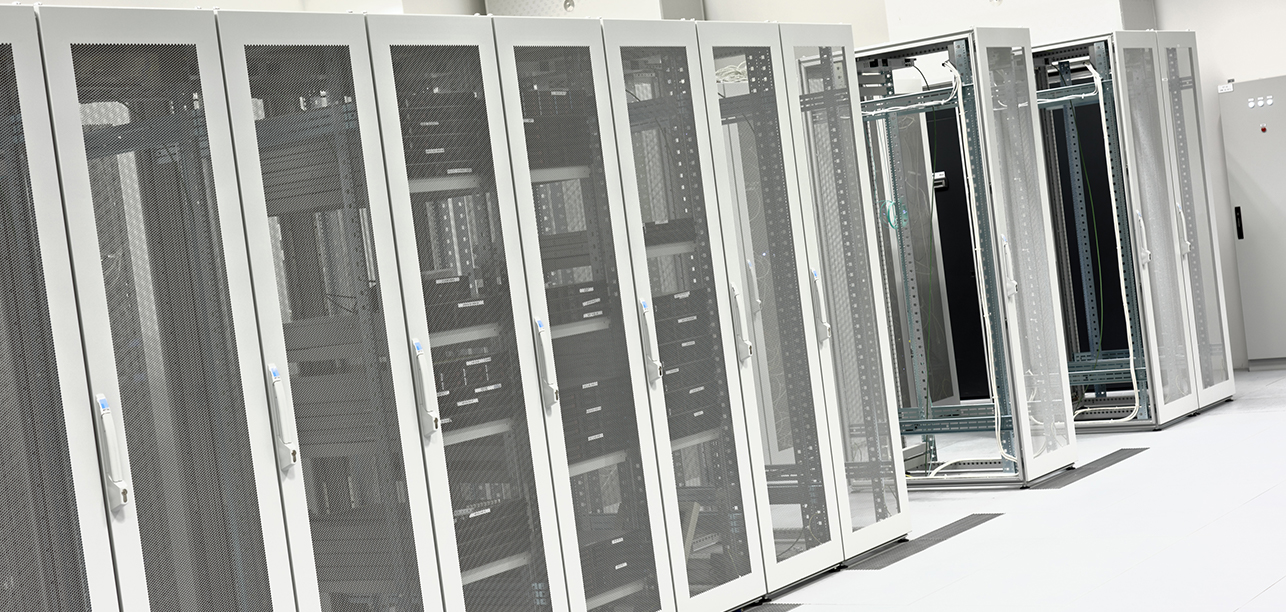Month: April 2012

 I don’t know about you, but when my sweet tooth hits, I need a cookie…stat! Which really got me thinking, are today’s consumers — who want things better, faster and cheaper — having a technology sweet tooth, in need of immediate satisfaction? Just viewing trends in consumer behavior over the last few years — it certainly seems to be the case. But as technology professionals — what can we do to satisfy their cravings? In the age of the cloud, it’s a game of time…provisioning time. With new products, sites and services coming online every day — you don’t have time to waste when releasing your latest innovation. It used to be that provisioning a server was a long, laborious (not to mention expensive) process, but with today’s on-demand hosting platforms and self-service technologies you can mix and match physical servers and cloud instances, which can be provisioned in just minutes. Talk about satisfying a craving!
I don’t know about you, but when my sweet tooth hits, I need a cookie…stat! Which really got me thinking, are today’s consumers — who want things better, faster and cheaper — having a technology sweet tooth, in need of immediate satisfaction? Just viewing trends in consumer behavior over the last few years — it certainly seems to be the case. But as technology professionals — what can we do to satisfy their cravings? In the age of the cloud, it’s a game of time…provisioning time. With new products, sites and services coming online every day — you don’t have time to waste when releasing your latest innovation. It used to be that provisioning a server was a long, laborious (not to mention expensive) process, but with today’s on-demand hosting platforms and self-service technologies you can mix and match physical servers and cloud instances, which can be provisioned in just minutes. Talk about satisfying a craving!
So…you’re probably wondering, why does the IT director cross the street? To get a cookie of course.
Want to know what can help satisfy your technology sweet tooth — just check out how we can provision servers in minutes instead of hours… and remember: Coders get hungry </too>!
Explore HorizonIQ
Bare Metal
LEARN MORE
Stay Connected

 A while ago, I was reading a white paper published by Intel discussing different methods to achieve high density in an air-cooled environment. It got me thinking about the different approaches I have seen or heard about in the data center industry and how best to apply them in a retail colocation environment. Because of the differences in supporting multiple customer environments, from basic servers to virtualized environments to blades, retail colocation requires a level of flexibility that doesn’t exist in most other uses of a data center.
A while ago, I was reading a white paper published by Intel discussing different methods to achieve high density in an air-cooled environment. It got me thinking about the different approaches I have seen or heard about in the data center industry and how best to apply them in a retail colocation environment. Because of the differences in supporting multiple customer environments, from basic servers to virtualized environments to blades, retail colocation requires a level of flexibility that doesn’t exist in most other uses of a data center.
The general consensus seems to be that you need a hot or cold aisle containment system and/or in-row cooling to achieve higher power densities. Unfortunately, I’ve seen plenty of providers who use hot/cold aisle containment fail to meet customer needs. While these are all sound approaches, they compromise our customers’ ability to install the environment they want and impair our flexibility in providing that environment. I am also concerned about how these solutions can introduce additional points of failure into the equation such as fans, under-floor piping and the proximity of liquid coolant closer to customer equipment.
The solution suggested by Intel proposes 15KW or more is achievable without major modifications to the standard raised floor infrastructure and air delivery systems in use today. The containment is accomplished via a chimney attached to the cabinet and return plenum. This solution requires no new moving parts that might fail and no new coolant proximity risks, plus no impact to flexibility. Best of all, if the facility is designed for it from day one, this solution can, through the higher density and lowered investment as compared to other high power density methods, lower the customer’s total cost of ownership and offer the solution provider a competitive advantage.
After much discussion with people far smarter than me and plenty of third party validations, this is the solution that Internap has chosen to use in our new facilities in Dallas, Los Angeles and Atlanta. High power density without compromise.
What’s your take on achieving high power densities?
Download our white paper: Future-Proofing Your Data Center Investment with Scalable Density for more on high-density solutions.
Explore HorizonIQ
Bare Metal
LEARN MORE
Stay Connected

 Springtime. Baseball. The smell of the grass. The crack of the bat. The cheers of the crowd. Conjures up great childhood memories for me. Every week I’d head down to the little league field where my dad coached and my brother played first base. Once my youngest sister – three at the time – wanted to be there so bad that she managed to sneak away from the babysitter with our dog and marched herself and Sam right over to the park – not a short distance by the way – where my mom promptly freaked out. But all turned out well.
Springtime. Baseball. The smell of the grass. The crack of the bat. The cheers of the crowd. Conjures up great childhood memories for me. Every week I’d head down to the little league field where my dad coached and my brother played first base. Once my youngest sister – three at the time – wanted to be there so bad that she managed to sneak away from the babysitter with our dog and marched herself and Sam right over to the park – not a short distance by the way – where my mom promptly freaked out. But all turned out well.
What I also remember is learning the value of good sportsmanship and teamwork – those lessons which become so important in all areas of life. In fact, many famous, and not so famous, notable quotes about teamwork appear on motivational posters in offices everywhere. You know…
“It’s not whether you win or lose, but how you play the game.”
Unknown
“I can accept failure. Everyone fails at something. I can’t accept not trying.”
Michael Jordan
“The achievements of an organization are the results of the combined effort of each individual.”
Vincent Lombardi
“Teamwork is the ability to work together toward a common vision. The ability to direct individual accomplishments toward organizational objectives. It is the fuel that allows common people to attain uncommon results.”
Andrew Carnegie
“Coming together is a beginning. Keeping together is progress. Working together is success.”
Henry Ford
Teamwork requires dedication, coordination and people skills. So, with a nod to teamwork, or lack thereof (and how it applies to IT), here is this week’s mashup.
- Oracle’s Cut-Throat Sales Culture Is Hurting Its Hardware Business
- The State of Information Governance
- Data center outsourcing could cure IT consumerization headaches
- How technology-driven teamwork can fuel social change
I hope these articles helped spark an idea or thought on how to address your personal or business issues with teamwork. For all you F1 fans, this related blog post might be of interest as well: What Formula 1 can teach us about teamwork.
Explore HorizonIQ
Bare Metal
LEARN MORE
Stay Connected

 Trust is an asset afforded to companies that work hard to deliver on goals, meet deadlines and overall perform like they say they will. It’s something that is most definitely earned and should be protected above all else − which is why I am excited to say that Internap recently made Forbes’ list of America’s Most Trustworthy Companies.
Trust is an asset afforded to companies that work hard to deliver on goals, meet deadlines and overall perform like they say they will. It’s something that is most definitely earned and should be protected above all else − which is why I am excited to say that Internap recently made Forbes’ list of America’s Most Trustworthy Companies.
The qualification process was stringent. To create the list, Forbes enlisted the help of GovernanceMetrics International (GMI), an independent financial analytics company, to examine more than 8,000 companies traded on U.S. exchanges. Of course there were many details used for qualification and scoring, but to sum it up, Forbes’ writes, “GMI’s quantitative and qualitative analysis looks beyond the raw data on companies’ income statements and balance sheets to assess the true quality of corporate accounting and management practices… GMI finds that its 100 Most Trustworthy Companies have consistently demonstrated transparent and conservative accounting practices and solid corporate governance and management.”
Of small-cap companies, Internap scored a whopping 98 out of 100 for its Accounting and Governance Risk (AGR) score. A score in this range means a company is conservative as opposed to aggressive and overall presents less risk to customers and stockholders. GMI Chairman James A. Kaplan says, “What these companies have in common is what they don’t have: problems that indicate elevated risk. Those problems can range from high executive compensation or incentives that are not aligned with shareholder interests to inconsistent application of accounting principles, or the occurrence of negative events.”
Needless to say (but I’ll say it anyway) we are proud to have measured up to the challenge and are honored to be among other tried and true organizations.
For more information about Internap and our commitment to intelligent IT Infrastructure solutions, visit our about us page.
Explore HorizonIQ
Bare Metal
LEARN MORE
Stay Connected

Formula 1™ is a very competitive sport and business. With the average team spending tens of millions, and the top teams spending hundreds of millions of dollars, each team is trying to get the most effective use of their money and resources.
The goal of the team is to win races and to win championships. F1 teams spend hundreds of hours designing, building, testing (when allowed) and perfecting each aspect of the car. What you and I see on the TV screen is the result of this teamwork. The effort culminates in two drivers from the team going out onto the track and using their knowledge of the car, their race craft and experience, to pursue F1 victory.
If you have ever seen the overhead shots of a F1 pit stop, you will see 16+ people (including three per wheel, one each for front and rear jacks, an extra man with engine start gear, and the lollipop man holding the driver in the pit) perform a highly orchestrated ballet of sorts. It is a very short ballet, usually less than four seconds, which allows the team to change all four tires and make slight wing adjustments (and in previous years, refuel the car.) This teamwork helps the driver get into and out of the pits ready to go back out onto the track and challenge for victory. Just take for example the Sahara Force India team who has actually won an award for speedy pit stops.
The pit crew is the most visible aspect of the modern F1 team, but there are many other team members back at the factory who are designing, building, manufacturing and testing parts that will end up in or on the car. There is also a huge logistical effort to get all of the cars, personnel and equipment to each race venue. All of this effort contributes to building and maintaining the team and the drive for success.
This past weekend at the Chinese Grand Prix we witnessed how that effort and drive paid off for Nico Rosberg, who after over 100 races scored his first F1 victory. His victory was a product of everyone’s efforts on the Mercedes team. Together the team achieved the necessary performance advantage to obtain and score that victory.
Much like the pit crew helps the Sahara Force India team drivers achieve success, the Internap NOC (Network Operations Center) and on-site data center staff help maintain the IT Infrastructure that drive our customers’ successes. Two NOCs, one here in Atlanta and one in Seattle, address customer issues, answering calls within 10 seconds. Certified engineers, not just ticket-takers, tackle the calls, and 95% of all inbound issues are addressed by the engineer that first takes the request. Meanwhile, on-site data center personnel are available for managed data center services and support 24/7 including remote hands requests, managed installations and more. Now that is teamwork!
Looking for a winning team with support you can count on? Find out more about Internap’s Stevie Award-winning customer support.
Explore HorizonIQ
Bare Metal
LEARN MORE
Stay Connected

 Bear with me. This has a point related to data centers and your business.
Bear with me. This has a point related to data centers and your business.
So the other night, I am driving home. It’s late because I work ridiculous hours. About a mile from my house, there is a hill. It’s not a huge hill, but enough of one that you can’t see what’s on the other side. In any case, as I am approaching the hill at a reasonable rate of speed, I notice the glow of headlights indicating on-coming traffic. No big deal. Except that the car comes over the hill straddling the center line. Great. Flash my brights. No change. No other immediately available options come to mind so I pull over and stop off the road to let them go by. And they did. Still straddling the center line. Zero acknowledgement that I was there. This was definitely an annoying situation – I clearly had just lost that game of chicken. But otherwise, I simply went about my business and drove home − and started thinking how much this experience was just like being in the data center business.
I drive a decent car (In case you care, it’s a 2005 GTO. And if you do care, you’ll probably also appreciate that its not stock). I didn’t attempt to strap a small engine to a bicycle or otherwise use some wheeled device to move me from point A to B. I bought a purpose-built machine designed to move me about. Similarly, a data center is a purpose-built property designed to house IT Infrastructure. It’s not the same thing as using a closet shelf at the back of your office. My car has doors with locks, an alarm, an engine, headlights, brakes, seat belts, air bags and crumple zones. Not unlike a data center, these things provide me with security, power and a resilient structure to go about my business.
The interesting thing that I took away from the incident at the beginning of this blog though was that my car didn’t save me from on-coming traffic that night. I saved myself because I had a plan. Sure I used the headlights, brakes and the steering wheel, but I knew what to do when the situation was beyond my car’s capabilities.
My point then is this − housing your IT equipment in a data center is part of ensuring business resiliency. It’s the part of the business I can help you with. I happen to think it’s pretty critical. However, the second part of business resiliency should be a plan around how to use the data center to maximize your application uptime. Things like the use of redundant power supplies and redundant power circuits will improve the availability of your IT deployment. Using blanking panels to improve and direct airflow will decrease failure rates on equipment. Using on-site remote hands services to reboot equipment when its needed as a part of a preventative maintenance program helps keep your environments running in tip top shape, etc.
So then a few thoughts. Number one: Don’t play chicken. You can bet that someone will want to win more than you’re willing to risk. Number two: Don’t waste your business on a bad bet. Choose the best data center provider you can find. And number three: Take advantage of your provider and the facility to optimize your environment for maximum uptime.
Need help with any of the above? Check out our Colocation Buyer’s Guide eBook for more.
Explore HorizonIQ
Bare Metal
LEARN MORE
Stay Connected

 Sounds ominous, doesn’t it? Not really. We published this great
Sounds ominous, doesn’t it? Not really. We published this great
infographic (well, we think so) about the differences in Private Cloud vs. Public Cloud. And, given all the continued discussion in the media about which cloud to adopt for your applications, my mashup this week highlights some of the key points, as well as the advantages of each, and what might be best for your business needs.
- Making Sense of the Cloud for Growing Businesses
- Three issues the cloud can’t solve for you
- OpenStack vs. CloudStack: The beginning of the open-source cloud wars
- Readers: What’s Your Cloud Strategy?
- Cloud computing gives IT more choices, report says
Also, you may be interested in a new eBook as well: The Top 5 Mistakes You Want to Avoid When Becoming a Cloud Superhero Or if you are already in adoption mode, what else can you share with those still pondering the idea of cloud?
Explore HorizonIQ
Bare Metal
LEARN MORE
Stay Connected

 Anytime, anywhere access is becoming the standard. According to Forrester Research, nearly 60% of all corporate employees share, access and manage content outside the office – with their laptop, iPhone, iPad, Blackberry, Android and more. Indications are that number is only going to increase. Just take a look at a recent infographic on working from home. Sixty-six percent of those surveyed about their remote work habits and expectations believe their office will go fully virtual in one to five years.
Anytime, anywhere access is becoming the standard. According to Forrester Research, nearly 60% of all corporate employees share, access and manage content outside the office – with their laptop, iPhone, iPad, Blackberry, Android and more. Indications are that number is only going to increase. Just take a look at a recent infographic on working from home. Sixty-six percent of those surveyed about their remote work habits and expectations believe their office will go fully virtual in one to five years.
Implications abound for those in the IT industry. For example, if you manage your company’s internal network, making your IT Infrastructure compatible with the telecommuting revolution may be jumping to the top of your list. Fortunately flexible IT Infrastructure solutions are paving the way to support increased demands for anytime, anywhere access.
In a recent article from Tech Republic, Mark Samuels writes that flexibility is key to keeping pace with an ever-expanding array of employee mobile devices. He quotes David Moloney, principal analyst at Ovum, “Apps are cascading through the organisation in every way, from workflow and testing through to e-commerce and billing. CIOs now have to deal with the interconnectedness of machines. And it means IT leaders are looking for more flexibility and responsiveness in the networks that their businesses use.”
Solutions like cloud, managed hosting, content delivery and the combination of the like are among the tools available in the IT professional’s arsenal that make this flexibility a reality. With the right blend of solutions and a partner that can accommodate each, the possibilities are endless.
Creating a modern mobile strategy? Discover how platform flexibility plays a role by watching our video.
Explore HorizonIQ
Bare Metal
LEARN MORE
Stay Connected

 Recent storms in Dallas and the resulting YouTube videos resemble clips from the 1996 hit movie Twister. It was a scary scene for many across the Silicon Prairie. Unfortunately it’s times like these when many businesses start thinking about their disaster recovery plan. The key to surviving a tornado and reducing the risk of loss, however, lies in planning, preparing and practicing what you and your business will do before a tornado or other natural disaster strikes. For most businesses this usually means finding a solid data center partner with disaster recovery built in. How do you know which one to choose? Here are a few things to consider:
Recent storms in Dallas and the resulting YouTube videos resemble clips from the 1996 hit movie Twister. It was a scary scene for many across the Silicon Prairie. Unfortunately it’s times like these when many businesses start thinking about their disaster recovery plan. The key to surviving a tornado and reducing the risk of loss, however, lies in planning, preparing and practicing what you and your business will do before a tornado or other natural disaster strikes. For most businesses this usually means finding a solid data center partner with disaster recovery built in. How do you know which one to choose? Here are a few things to consider:
Redundancy
A reliable data center provider will have N+1 infrastructure designs for both power and cooling. This means the facility has what it needs to operate (N), plus one spare in case anything goes wrong.
Preventative Maintenance
A maintenance program is imperative for any provider you choose. After all, prevention is the best protection plan. A Computer Maintenance Management System (CMMS) should be in place to keep track of when maintenance is due, as well as repairs that have been made.
Response Plans
In the event that some piece of infrastructure fails, having a well-documented emergency response plan in place is a must for the data center partner you choose. These plans map out specific actions staff will take both during and after an event.
Although there is no completely safe place during a tornado, some locations are much safer than others. Among these are data center locations like our facility in Dallas, which thanks to some of the practices above is still well intact and functioning with zero downtime.
Looking for a managed data center partner in the Lone Star State? Schedule a tour today.
Explore HorizonIQ
Bare Metal
LEARN MORE
Stay Connected

 I think it’s fair to say that Google has done some pretty innovative things. They seem to be a smart and focused bunch of people. Not surprisingly, companies with talented, focused people can be quite innovative. When you throw billions of dollars of funding behind them, the results can be pretty impressive.
I think it’s fair to say that Google has done some pretty innovative things. They seem to be a smart and focused bunch of people. Not surprisingly, companies with talented, focused people can be quite innovative. When you throw billions of dollars of funding behind them, the results can be pretty impressive.
Recently, Google’s use of recycled water as a part of their data center operations created a lot of press. A blog from their Facilities Manager, Jim Brown, revealed that Google was using recycled water to cool 100% their data center here in Georgia. The use of recycled water for cooling is pretty smart. Data centers are huge consumers of resources. Unless they are built and managed intelligently, they can have significant environmental impacts.
Using recycled water allows a data center provider or colocation facility to avoid placing additional strain on the local water supply because recycled water has already been used once and has not yet been returned to the environment. According to the blog, Google intercepts recycled water from the local water authority, treats it further and uses it for heat exchange in their data center cooling. A portion of the water that is used evaporates. The rest of the water is treated again and returned to the environment in a clean, clear and safe form.
Google has done something truly impressive here, both by providing a clever solution that addresses an environmental concern associated with their data centers and increasing the awareness of intelligent options to lessen the environmental impact of data center operations. And of course, it’s nice to see another group of smart, focused data center individuals coming to the same conclusion we did around recycled water use. Internap has been using recycled water to cool its data center in Santa Clara, CA since it opened in 2010. While we knew it was making a difference for us, the third party validation from Google sure feels good.
What other green practices are you interested in?
Visit our SlideShare page and download our presentation from the recent Green Data Center Conference in Dallas to learn more.





